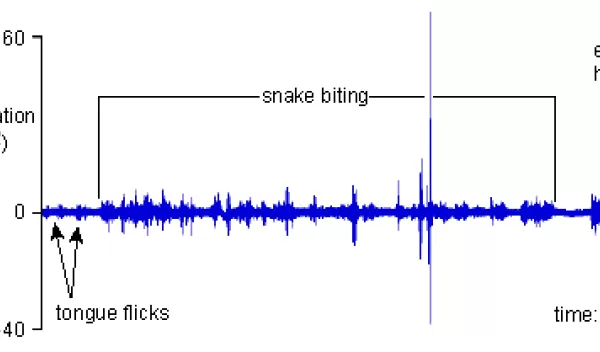
Snake Attack on Frog Eggs Provokes Premature Hatching
Everyone knows it's a tough world out there, but for Panama's red-eyed tree frogs, the trouble starts before they have even hatched. That's because hungry snakes think the "caviar" makes a good meal. Now scientists have discovered that encapsulated frog embryos sense impending doom when they detect the vibrations from a snake's attack on the egg cluster. Once warned, the developing frogs prematurely hatch from their eggs, drop into the water below and swim to safety as nascent tadpoles.
Left undisturbed, the red-eyed tree frogs usually reach tadpole stage six to eight days after fertilization. But if a snake attacks the gooey group, many of the embryos hatch immediately--one to three days earlier than normal. Researcher Karen Warkentin of Boston University implanted vibration detectors into the egg masses to see if the pre-hatched frogs could distinguish the stimulatory effects of snakebites from other environmental vibrations, like raindrops in a tropical storm for instance. She found the premature hatching occurred only in response to vibrations characteristic of snakebites--that is, not just any vibration spurred the embryos to leave the comfort of their eggs. So, it appears the developing frogs have picked up a way to escape immediate predation, but also know to stay put if the vibes are friendly.
Warkentin, whose research is supported in part by the National Science Foundation, will report these findings in the July issue of the journal Animal Behavior.
For complete information on this discovery, see the May 5, 2005, Boston University press release, "A Whole Lot of Shaking Goin' on Triggers Early Hatching in Red-Eyed Tree Frogs."
-- Randy Vines


